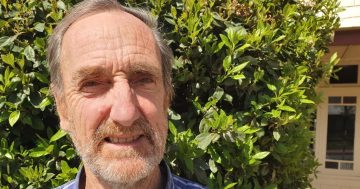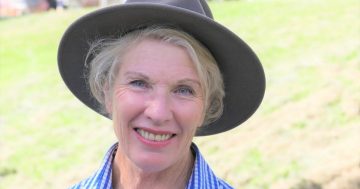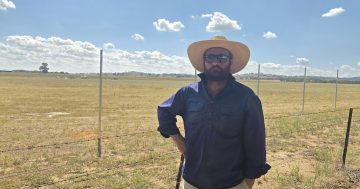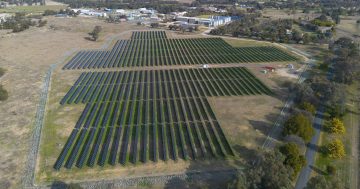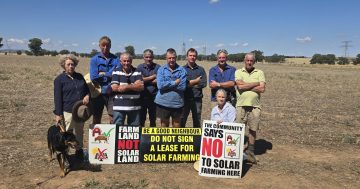The Save Gundary Plains action group says solar panel arrays like these will spoil the landscape and bring down property values near Goulburn. Photo: Save Gundary Plains.
A multinational renewable energy venture has riled its supporters and opponents in Goulburn with the release of an environmental impact statement for its proposed $650 million Gundary Solar Farm 10 kilometres southeast of the city.
Lightsource bp says the 400-megawatt peak (MWp) plant and batteries will generate enough clean energy for about 133,000 homes and reduce carbon emissions by 670,000 tonnes.
The promise of local jobs and transforming the region with social and environmental benefits has fallen well short of expectations of its most vocal supporter, climate change activist The Goulburn Group (TGG).
TGG has been lobbying for significant community funds, and for 50 per cent of the jobs going to local people and specific community projects providing tangible benefits to the local economy.
In a submission to the NSW Department of Planning, TGG suggests Lightsource adopt the department’s guideline for solar projects to pay at least $850 per megawatt per annum for the life of the project in benefit sharing for the community.
It cites an example of the Pottinger Energy Park in the Western Riverina, promising $500,000 to mitigate disruption during construction and $1.5 million a year indexed for the life of the project.
TGG had to dig into the Lightsource EIS appendix to see any mention of money for the Goulburn community and found $250,000 for community programs as a one-off payment, which it describes as grossly inadequate.
The proponent says it is developing a community benefit-sharing strategy with the Goulburn Mulwaree Council.
TGG wants Lightsource to help train its local workforce in partnership with Goulburn TAFE.
“We believe the company should be required to commit to a defined program of training for a significant number of students and guarantee a specific number of jobs on the project for them,” its submission says.
Save Gundary Plains spokeswoman Ann Moore said while the proponents had referred to the solar farm’s 400 jobs over the past two years, the EIS indicated only 12.5 jobs for people from Goulburn.
Her husband, Stan, said the EIS offered nothing to placate the 108 families living within a four-kilometre radius of the proposed project on Windellama Road.
The Moores bought their property 15 years ago and made a significant additional investment installing their own waste-water treatment because they’re in the Sydney water catchment.
Now, they have a 3.7 km common boundary with the proposed solar farm, and their home is 150 metres from the boundary. Comparing valuations before and after the project came to light revealed a 30 per cent drop in the value of their property worth hundreds of thousands of dollars. Mr Moore said property values across the Gundary Plains would plummet by more than $50 to $100 million.
Lightsource bp met with objectors in April 2022.
“We were summonsed by bp as individuals to meetings in Goulburn; they wanted to talk to us about neighbourhood benefits, compensation,” he said.
“We requested that we come as a group to hear what was going on, and then we might sit down individually with them. They wouldn’t do that.
“They also held meetings with small numbers of us, where they put what they would offer on the table.”
Mr Moore said he would receive $5000 annually for 20 years.
“It’s peanuts,” he said. “This is a $6 to $700 million project and the surrounding neighbours get no benefit.”
Some property owners were offered $20,000 worth of solar panels to compensate for noise during construction. But most already had solar panels on their roofs. So a one-off payment of $15,000 annually during construction was made, but was insufficient, because they would have to find somewhere else to live to escape the noise, Mr Moore said.
Mr Moore said paddocks full of solar panels would make the land more susceptible to grass fires, and to the east on Kooringaroo Road, 42 residents only had a single dirt-lane road to get out if a serious blaze broke out.
Lightsource says its assessment on Rural Fire Service guidelines indicated that the bushfire threat is low as the landscape is predominantly grazed, which reduces grassland fuel loads and bushfire potential.
Its EIS says refinements of the project after consultation include re-locating battery energy storage systems, removing 50 hectares of solar arrays in the northwest of the site to reduce visual and noise impacts, and landscape screening.
Of the $650 million capital investment, about $98 million will be retained within the regional economy.
Submissions on the EIS close on Thursday, 12 December.







